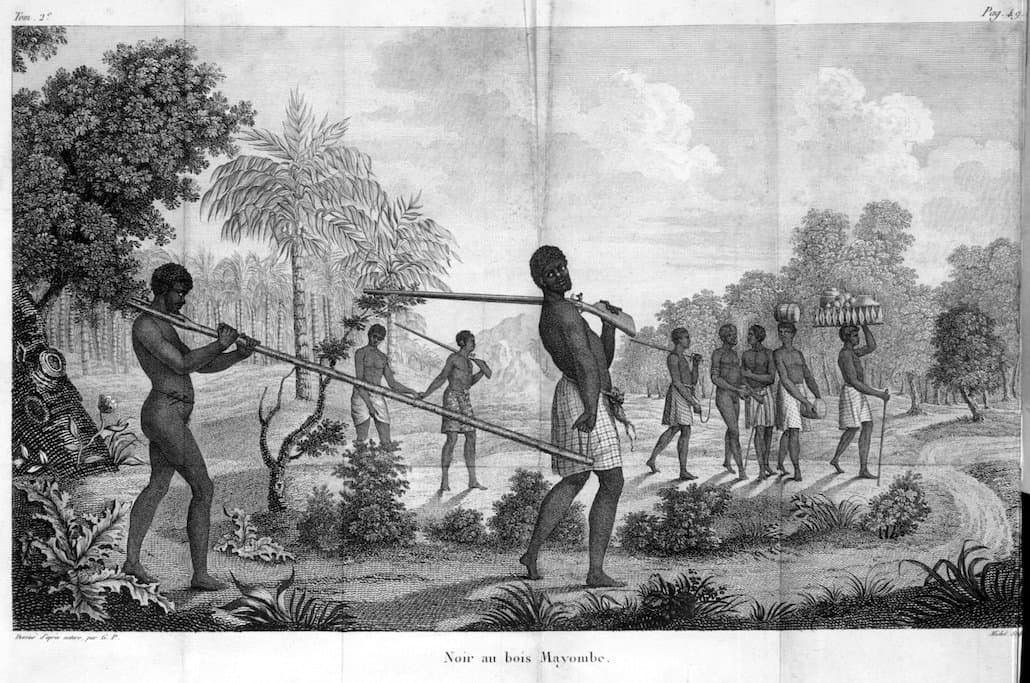How Syria’s architecture laid the foundation for brutal war
While some stories are meant to be a factual record of what has happened, delving deeper into the why it happened, and what we should do, involves a collection of subjective assumptions, individual conclusions, and personal hypothesis. In this talk from the TEDSummit 2016 conference, delivered by Marwa Al-Sabouni via the internet, we see such a blend.
Marwa takes us into the city of Homs, Syria where she has always lived, and which has been ravaged by years of conflict. While recognizing the fact that there were many factors which caused the war, she takes a close look at the role of architecture in regards to how it can strengthen, or weaken, the social fabric of a community.
Architecture is not the axis around which all human life rotates, but it has the power to suggest and even direct human activity.
In classic Ideas Worth Spreading style, Marwa’s talk combines harsh reality (facts that can be verified) with personal insights and suggestions in a way that compels the listener to pause, consider her perspective, and then reconsider their own preconceived notions.
Full Transcript
0:07
Hi. My name is Marwa, and I’m an architect. I was born and raised in Homs, a city in the central western part of Syria, and I’ve always lived here. After six years of war, Homs is now a half-destroyed city. My family and I were lucky; our place is still standing. Although for two years, we were like prisoners at home. Outside there were demonstrations and battles and bombings and snipers. My husband and I used to run an architecture studio in the old town main square. It’s gone, as is most of the old town itself. Half of the city’s other neighborhoods are now rubble. Since the ceasefire in late 2015, large parts of Homs have been more or less quiet. The economy is completely broken, and people are still fighting. The merchants who had stalls in the old city market now trade out of sheds on the streets. Under our apartment, there is a carpenter, sweetshops, a butcher, a printing house, workshops, among many more. I have started teaching part-time, and with my husband, who juggles several jobs, we’ve opened a small bookshop. Other people do all sorts of jobs to get by.
1:18
When I look at my destroyed city, of course, I ask myself: What has led to this senseless war? Syria was largely a place of tolerance, historically accustomed to variety, accommodating a wide range of beliefs, origins, customs, goods, food. How did my country — a country with communities living harmoniously together and comfortable in discussing their differences — how did it degenerate into civil war, violence, displacement and unprecedented sectarian hatred? There were many reasons that had led to the war — social, political and economic. They all have played their role. But I believe there is one key reason that has been overlooked and which is important to analyze, because from it will largely depend whether we can make sure that this doesn’t happen again. And that reason is architecture.
2:09
Architecture in my country has played an important role in creating, directing and amplifying conflict between warring factions, and this is probably true for other countries as well. There is a sure correspondence between the architecture of a place and the character of the community that has settled there. Architecture plays a key role in whether a community crumbles or comes together. Syrian society has long lived the coexistence of different traditions and backgrounds. Syrians have experienced the prosperity of open trade and sustainable communities. They have enjoyed the true meaning of belonging to a place, and that was reflected in their built environment, in the mosques and churches built back-to-back, in the interwoven souks and public venues, and the proportions and sizes based on principles of humanity and harmony.
2:56
This architecture of mixity can still be read in the remains. The old Islamic city in Syria was built over a multilayered past, integrating with it and embracing its spirit. So did its communities. People lived and worked with each other in a place that gave them a sense of belonging and made them feel at home. They shared a remarkably unified existence.
3:17
But over the last century, gradually this delicate balance of these places has been interfered with; first, by the urban planners of the colonial period, when the French went enthusiastically about, transforming what they saw as the un-modern Syrian cities. They blew up city streets and relocated monuments. They called them improvements, and they were the beginning of a long, slow unraveling. The traditional urbanism and architecture of our cities assured identity and belonging not by separation, but by intertwining. But over time, the ancient became worthless, and the new, coveted. The harmony of the built environment and social environment got trampled over by elements of modernity — brutal, unfinished concrete blocks, neglect, aesthetic devastation, divisive urbanism that zoned communities by class, creed or affluence.
4:09
And the same was happening to the community. As the shape of the built environment changed, so the lifestyles and sense of belonging of the communities also started changing. From a register of togetherness, of belonging, architecture became a way of differentiation, and communities started drifting apart from the very fabric that used to unite them, and from the soul of the place that used to represent their common existence.
4:35
While many reasons had led to the Syrian war, we shouldn’t underestimate the way in which, by contributing to the loss of identity and self-respect, urban zoning and misguided, inhumane architecture have nurtured sectarian divisions and hatred. Over time, the united city has morphed into a city center with ghettos along its circumference. And in turn, the coherent communities became distinct social groups, alienated from each other and alienated from the place. From my point of view, losing the sense of belonging to a place and a sense of sharing it with someone else has made it a lot easier to destroy.
5:13
The clear example can be seen in the informal housing system, which used to host, before the war, over 40 percent of the population. Yes, prior to the war, almost half of the Syrian population lived in slums, peripheral areas without proper infrastructure, made of endless rows of bare block boxes containing people, people who mostly belonged to the same group, whether based on religion, class, origin or all of the above.
5:41
This ghettoized urbanism proved to be a tangible precursor of war. Conflict is much easier between pre-categorized areas — where the “others” live. The ties that used to bind the city together — whether they were social, through coherent building, or economic, through trade in the souk, or religious, through the coexistent presence — were all lost in the misguided and visionless modernization of the built environment.
6:07
Allow me an aside. When I read about heterogeneous urbanism in other parts of the world, involving ethnic neighborhoods in British cities or around Paris or Brussels, I recognize the beginning of the kind of instability we have witnessed so disastrously here in Syria.
6:26
We have severely destroyed cities, such as Homs, Aleppo, Daraa and many others, and almost half of the population of the country is now displaced.
6:35
Hopefully, the war will end, and the question that, as an architect, I have to ask, is: How do we rebuild? What are the principles that we should adopt in order to avoid repeating the same mistakes? From my point of view, the main focus should be on creating places that make their people feel they belong. Architecture and planning need to recapture some of the traditional values that did just that, creating the conditions for coexistence and peace, values of beauty that don’t exhibit ostentation, but rather, approachability and ease, moral values that promote generosity and acceptance, architecture that is for everyone to enjoy, not just for the elite, just as used to be in the shadowed alleys of the old Islamic city, mixed designs that encourage a sense of community.
7:24
There is a neighborhood here in Homs that’s called Baba Amr that has been fully destroyed. Almost two years ago, I introduced this design into a UN-Habitat competition for rebuilding it. The idea was to create an urban fabric inspired by a tree, capable of growing and spreading organically, echoing the traditional bridge hanging over the old alleys, and incorporating apartments, private courtyards, shops, workshops, places for parking and playing and leisure, trees and shaded areas. It’s far from perfect, obviously. I drew it during the few hours of electricity we get. And there are many possible ways to express belonging and community through architecture. But compare it with the freestanding, disconnected blocks proposed by the official project for rebuilding Baba Amr.
8:12
Architecture is not the axis around which all human life rotates, but it has the power to suggest and even direct human activity. In that sense, settlement, identity and social integration are all the producer and product of effective urbanism. The coherent urbanism of the old Islamic city and of many old European towns, for instance, promote integration, while rows of soulless housing or tower blocks, even when they are luxurious, tend to promote isolation and “otherness.” Even simple things like shaded places or fruit plants or drinking water inside the city can make a difference in how people feel towards the place, and whether they consider it a generous place that gives, a place that’s worth keeping, contributing to, or whether they see it as an alienating place, full of seeds of anger. In order for a place to give, its architecture should be giving, too.
9:10
Our built environment matters. The fabric of our cities is reflected in the fabric of our souls. And whether in the shape of informal concrete slums or broken social housing or trampled old towns or forests of skyscrapers, the contemporary urban archetypes that have emerged all across the Middle East have been one cause of the alienation and fragmentation of our communities.
9:34
We can learn from this. We can learn how to rebuild in another way, how to create an architecture that doesn’t contribute only to the practical and economic aspects of people’s lives, but also to their social, spiritual and psychological needs. Those needs were totally overlooked in the Syrian cities before the war. We need to create again cities that are shared by the communities that inhabit them. If we do so, people will not feel the need to seek identities opposed to the other identities all around, because they will all feel at home.
10:10
Thank you for listening.
◆
Subscribe to our newsletter for the latest updates!
Copyright Storytelling with Impact® – All rights reserved





